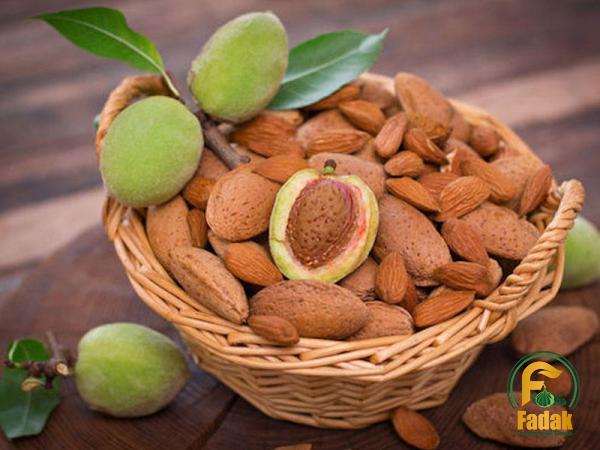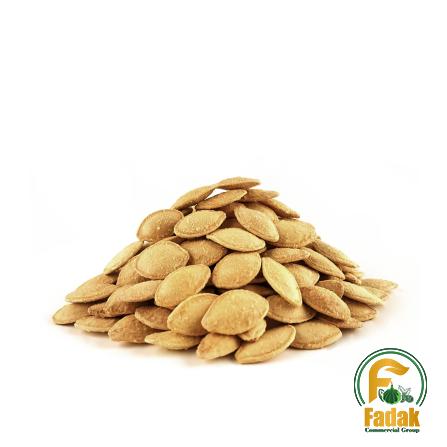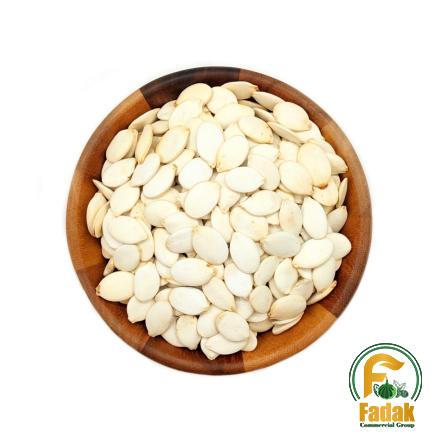Almonds, known for their numerous health benefits and delicious taste, are widely consumed all over the world. Among the various almond varieties available, Kashmiri almonds are considered to be of superior quality. The unique climatic and geographic conditions of the Kashmir Valley in India give rise to these extraordinary almonds, with exceptional taste, size, and nutritional value. In this article, we will explore the different types of Kashmiri almonds and their distinguishing features. 1. Badam Giri: Badam Giri is one of the most popular and sought-after varieties of Kashmiri almonds. Known for their large size and vibrant taste, these almonds are highly preferred by consumers. They have a higher oil content, making them rich in flavor and providing a satisfying crunch. Badam Giri almonds are round and have a beautiful light brown color. They are often used in Indian desserts, sweet dishes, and confectionery. 2. Mamra: Mamra almonds, also known as Gurbandi, are a unique variety of Kashmiri almonds known for their crunchy texture, rich aroma, and distinct flavor. They are smaller in size compared to Badam Giri almonds but pack a lot of nutritional value. Mamra almonds are characterized by their dark brown skin and wrinkle-like appearance. These almonds are typically consumed as a snack and are often included in muesli, granola bars, and breakfast cereals.

nut
 3. Shalimar: Shalimar almonds are another popular variety that hails from Kashmir. They are often referred to as “Shalimar Mix” due to their excellent blend of taste, size, and texture. These almonds are smaller in size than Badam Giri but larger than Mamra almonds. Shalimar almonds have a slightly bolder flavor and are commonly used in various culinary preparations, including desserts, sweets, and savory dishes. 4. Kagzi: Kagzi almonds, also known as paper-thin almonds, are highly treasured for their delicate texture and mild taste. These almonds are characterized by their thin papery skin and elongated shape. While they may be smaller in size compared to other varieties, Kagzi almonds are renowned for their tender and soft bite. They are often used in baking, as toppings for cakes and cookies, and as a garnish for salads and stir-fries. 5. Giri Classic: Giri Classic almonds are a premium variety of Kashmiri almonds that offer exceptional quality, taste, and size. They are the epitome of Kashmiri almond excellence, with a rich flavor and a creamy texture. Grown in the pristine valleys of Kashmir, Giri Classic almonds are known for their uniformity in shape, size, and color. They are often consumed as a snack, included in trail mixes, or used in roasted or flavored almond recipes. 6. Chandi Bol: Chandi Bol almonds are renowned for their unique silver skin, which sets them apart from other Kashmiri almond varieties. These almonds have a mild, slightly sweet taste and a characteristic crunch. Chandi Bol almonds are often used in festive delicacies like biryani and pulao, as well as in various sweet dishes and confectioneries. The silver skin adds an aesthetically pleasing touch to any culinary creation. Conclusion: Kashmiri almonds stand out among other almond varieties due to their exceptional quality, taste, and nutritional value. The different types of Kashmiri almonds offer a wide range of textures, flavors, and sizes, making them suitable for various culinary uses. From the large and flavorful Badam Giri to the delicate and thin-skinned Kagzi, each type has its unique characteristics. Incorporating Kashmiri almonds into your diet not only adds a delightful taste but also provides numerous health benefits. Consider choosing from the range of Kashmiri almonds available to enhance your recipes and enjoy their exquisite flavor.Types of Kashmiri Almonds: Exploring Business Opportunities and Market Potential 1. Introduction to the Kashmiri Almond Industry: The Kashmiri almond industry has witnessed significant growth in recent years, fueled by the increasing demand for premium quality almonds worldwide. Kashmiri almonds are considered to be of superior taste, size, and nutritional value, making them highly sought after by consumers and businesses alike. This section provides an introduction to the industry and highlights the business potential of different types of Kashmiri almonds.
3. Shalimar: Shalimar almonds are another popular variety that hails from Kashmir. They are often referred to as “Shalimar Mix” due to their excellent blend of taste, size, and texture. These almonds are smaller in size than Badam Giri but larger than Mamra almonds. Shalimar almonds have a slightly bolder flavor and are commonly used in various culinary preparations, including desserts, sweets, and savory dishes. 4. Kagzi: Kagzi almonds, also known as paper-thin almonds, are highly treasured for their delicate texture and mild taste. These almonds are characterized by their thin papery skin and elongated shape. While they may be smaller in size compared to other varieties, Kagzi almonds are renowned for their tender and soft bite. They are often used in baking, as toppings for cakes and cookies, and as a garnish for salads and stir-fries. 5. Giri Classic: Giri Classic almonds are a premium variety of Kashmiri almonds that offer exceptional quality, taste, and size. They are the epitome of Kashmiri almond excellence, with a rich flavor and a creamy texture. Grown in the pristine valleys of Kashmir, Giri Classic almonds are known for their uniformity in shape, size, and color. They are often consumed as a snack, included in trail mixes, or used in roasted or flavored almond recipes. 6. Chandi Bol: Chandi Bol almonds are renowned for their unique silver skin, which sets them apart from other Kashmiri almond varieties. These almonds have a mild, slightly sweet taste and a characteristic crunch. Chandi Bol almonds are often used in festive delicacies like biryani and pulao, as well as in various sweet dishes and confectioneries. The silver skin adds an aesthetically pleasing touch to any culinary creation. Conclusion: Kashmiri almonds stand out among other almond varieties due to their exceptional quality, taste, and nutritional value. The different types of Kashmiri almonds offer a wide range of textures, flavors, and sizes, making them suitable for various culinary uses. From the large and flavorful Badam Giri to the delicate and thin-skinned Kagzi, each type has its unique characteristics. Incorporating Kashmiri almonds into your diet not only adds a delightful taste but also provides numerous health benefits. Consider choosing from the range of Kashmiri almonds available to enhance your recipes and enjoy their exquisite flavor.Types of Kashmiri Almonds: Exploring Business Opportunities and Market Potential 1. Introduction to the Kashmiri Almond Industry: The Kashmiri almond industry has witnessed significant growth in recent years, fueled by the increasing demand for premium quality almonds worldwide. Kashmiri almonds are considered to be of superior taste, size, and nutritional value, making them highly sought after by consumers and businesses alike. This section provides an introduction to the industry and highlights the business potential of different types of Kashmiri almonds.
Specifications of nut
 2. Growing Demand for Kashmiri Almonds: The global demand for almonds has been steadily increasing, driven by the growing awareness of their health benefits, use in various culinary applications, and rising income levels of consumers. The unique qualities of Kashmiri almonds, including their taste, size, and nutritional value, have resulted in an upsurge in demand from both domestic and international markets. This section discusses the increasing demand for Kashmiri almonds, presenting a promising business opportunity for growers, processors, and exporters. 3. Benefits and Nutritional Value of Kashmiri Almonds: Kashmiri almonds are valued not only for their exquisite taste but also for their numerous health benefits. Rich in healthy fats, vitamin E, fiber, and antioxidants, these almonds provide a wide range of nutritional advantages, including heart health, improved brain function, weight management, and skin health. Highlighting the nutritional value of Kashmiri almonds can be an effective marketing strategy for businesses, attracting health-conscious consumers to their products. 4. Export Potential and International Market Reach: Kashmiri almonds have gained popularity in international markets due to their superior quality and taste. The high demand for these almonds in countries like the United States, United Kingdom, Canada, and the Middle East presents a lucrative export opportunity for Kashmiri almond producers and exporters. Establishing strategic partnerships with international distributors and expanding market reach can significantly boost the business prospects for stakeholders in the Kashmiri almond industry. 5. Value-Added Products and Diversification: To cater to the evolving preferences and demands of consumers, businesses in the Kashmiri almond industry can explore the creation of value-added products. These can include almond butter, almond milk, almond flour, almond oil, and almond-based snacks. Developing a diverse range of products not only expands market opportunities but also adds value to the almond crop, leading to higher profit margins. 6. Organic and Sustainable Farming Practices: In an era of increasing consumer awareness of sustainability and environmental impact, adopting organic farming practices can enhance the marketability of Kashmiri almonds. Organic almond production ensures the absence of chemical fertilizers, pesticides, and genetically modified organisms (GMOs). Highlighting the organic and sustainable methods employed in growing Kashmiri almonds can attract eco-conscious consumers, leading to increased demand and premium pricing.
2. Growing Demand for Kashmiri Almonds: The global demand for almonds has been steadily increasing, driven by the growing awareness of their health benefits, use in various culinary applications, and rising income levels of consumers. The unique qualities of Kashmiri almonds, including their taste, size, and nutritional value, have resulted in an upsurge in demand from both domestic and international markets. This section discusses the increasing demand for Kashmiri almonds, presenting a promising business opportunity for growers, processors, and exporters. 3. Benefits and Nutritional Value of Kashmiri Almonds: Kashmiri almonds are valued not only for their exquisite taste but also for their numerous health benefits. Rich in healthy fats, vitamin E, fiber, and antioxidants, these almonds provide a wide range of nutritional advantages, including heart health, improved brain function, weight management, and skin health. Highlighting the nutritional value of Kashmiri almonds can be an effective marketing strategy for businesses, attracting health-conscious consumers to their products. 4. Export Potential and International Market Reach: Kashmiri almonds have gained popularity in international markets due to their superior quality and taste. The high demand for these almonds in countries like the United States, United Kingdom, Canada, and the Middle East presents a lucrative export opportunity for Kashmiri almond producers and exporters. Establishing strategic partnerships with international distributors and expanding market reach can significantly boost the business prospects for stakeholders in the Kashmiri almond industry. 5. Value-Added Products and Diversification: To cater to the evolving preferences and demands of consumers, businesses in the Kashmiri almond industry can explore the creation of value-added products. These can include almond butter, almond milk, almond flour, almond oil, and almond-based snacks. Developing a diverse range of products not only expands market opportunities but also adds value to the almond crop, leading to higher profit margins. 6. Organic and Sustainable Farming Practices: In an era of increasing consumer awareness of sustainability and environmental impact, adopting organic farming practices can enhance the marketability of Kashmiri almonds. Organic almond production ensures the absence of chemical fertilizers, pesticides, and genetically modified organisms (GMOs). Highlighting the organic and sustainable methods employed in growing Kashmiri almonds can attract eco-conscious consumers, leading to increased demand and premium pricing.
buy nut
 7. Branding and Packaging: Effective branding and packaging play a crucial role in establishing a distinct identity for Kashmiri almonds in the market. Creating a captivating brand image that emphasizes the unique characteristics of Kashmiri almonds can differentiate them from other almond varieties. Eye-catching packaging that reflects the premium quality and authenticity of Kashmiri almonds can attract consumers and enhance shelf appeal. 8. Collaborations with Chefs and Culinary Influencers: Collaborating with renowned chefs, culinary influencers, and food bloggers can significantly boost the visibility and market reach of Kashmiri almonds. Promoting recipes, cooking demonstrations, and health benefits through various digital platforms can create a buzz around the product and inspire consumers to incorporate Kashmiri almonds into their culinary creations. 9. Research and Development: Continuous research and development are essential for innovation and improvement in the Kashmiri almond industry. Investing in research and development activities can lead to the development of new varieties, improved cultivation techniques, and processing methods. This section explores the importance of research and development in fostering business growth and sustainability in the Kashmiri almond industry. 10. Government Support and Incentives: Governments often provide support and incentives to promote agriculture and export industries. Stakeholders in the Kashmiri almond industry can explore avenues to collaborate with government agencies, take advantage of subsidy programs, and access funding opportunities. This can facilitate business expansion, product development, and market access. 11. Quality Assurance and Certifications: Ensuring quality standards and obtaining certifications such as ISO, HACCP, and organic certifications can build trust and credibility in the market. Implementing rigorous quality control measures and adhering to international food safety standards can assure consumers of the authenticity and quality of Kashmiri almonds. 12. Conclusion: The Kashmiri almond industry offers immense business potential with its diverse range of almond varieties, increasing global demand, and unique taste and nutritional value. Stakeholders in the industry can capitalize on this potential by leveraging marketing strategies, exploring export opportunities, diversifying product offerings, and focusing on sustainable practices. By embracing innovation, collaboration, and quality assurance, businesses can establish a strong foothold in the market and cater to the growing demand for premium Kashmiri almonds.
7. Branding and Packaging: Effective branding and packaging play a crucial role in establishing a distinct identity for Kashmiri almonds in the market. Creating a captivating brand image that emphasizes the unique characteristics of Kashmiri almonds can differentiate them from other almond varieties. Eye-catching packaging that reflects the premium quality and authenticity of Kashmiri almonds can attract consumers and enhance shelf appeal. 8. Collaborations with Chefs and Culinary Influencers: Collaborating with renowned chefs, culinary influencers, and food bloggers can significantly boost the visibility and market reach of Kashmiri almonds. Promoting recipes, cooking demonstrations, and health benefits through various digital platforms can create a buzz around the product and inspire consumers to incorporate Kashmiri almonds into their culinary creations. 9. Research and Development: Continuous research and development are essential for innovation and improvement in the Kashmiri almond industry. Investing in research and development activities can lead to the development of new varieties, improved cultivation techniques, and processing methods. This section explores the importance of research and development in fostering business growth and sustainability in the Kashmiri almond industry. 10. Government Support and Incentives: Governments often provide support and incentives to promote agriculture and export industries. Stakeholders in the Kashmiri almond industry can explore avenues to collaborate with government agencies, take advantage of subsidy programs, and access funding opportunities. This can facilitate business expansion, product development, and market access. 11. Quality Assurance and Certifications: Ensuring quality standards and obtaining certifications such as ISO, HACCP, and organic certifications can build trust and credibility in the market. Implementing rigorous quality control measures and adhering to international food safety standards can assure consumers of the authenticity and quality of Kashmiri almonds. 12. Conclusion: The Kashmiri almond industry offers immense business potential with its diverse range of almond varieties, increasing global demand, and unique taste and nutritional value. Stakeholders in the industry can capitalize on this potential by leveraging marketing strategies, exploring export opportunities, diversifying product offerings, and focusing on sustainable practices. By embracing innovation, collaboration, and quality assurance, businesses can establish a strong foothold in the market and cater to the growing demand for premium Kashmiri almonds.










Your comment submitted.